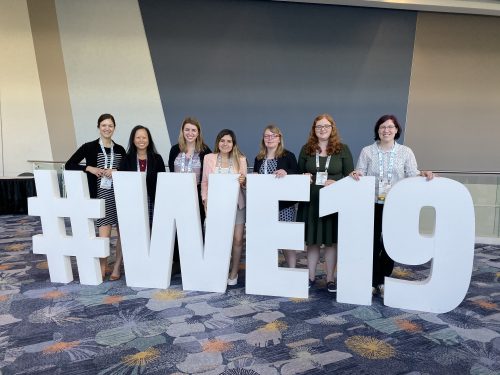Alaska needs more women engineers to help it move forward
September 30, 2020
— by Bill Schnabel, dean of the College of Engineering and Mines
When we opened our real and virtual doors to the Introduction to Engineering class
in the College of Engineering and Mines this semester, we noticed something promising
for Alaska: 30% of that class is composed of women. That’s a big deal. Nationally,
the proportion of women in undergraduate engineering programs hovers just above 20%, and at UAF, the historical average has been slightly less than 20%. The bump to
30% women we observed in our first-year intro class — roughly 50% higher than average
— could be a promising indicator of things to come.
Alaska faces significant challenges over the years ahead, and it is the engineers
across industry sectors who will meet those challenges with new solutions. Engineers
will design the infrastructure appropriate for adapting to Alaska’s changing climate;
engineers will devise advanced techniques for developing our natural resources while
safeguarding our lands and waters; engineers will bring the latest technologies to
bear on issues and challenges across Alaska’s far-reaching communities. Indeed, it
will be engineers who lead the way to Alaska’s future. And one day soon, half of those
leading engineers will be women.
Alaska needs more women engineers because its future requires innovation for long-term
growth. Study after study illustrates that complex, creative and multi-sector endeavors
such as engineering design are enhanced when they are conducted by diverse teams.
For example, in a 2018 analysis of 1,700 companies, the Boston Consulting Group found a significant 19% innovation
return to diversity. In other words, companies with diverse leadership teams generated
45% of their revenues from recently created products and services, versus only 26%
in non-diverse companies. Additionally, McKinsey & Company’s multiyear data from over 1,000 companies illustrates the clear link between gender diversity, enterprise
profitability, and long-term value creation. In 2019, McKinsey noted that companies
with highly gender-diverse executive teams are 25% more likely to generate above-average
profitability than their non-diverse peers. Diverse teams go hand in hand with adaptive
problem-solving, higher industry profits and innovation, all of which present opportunities
for Alaska.

It’s our responsibility at UAF to ensure that all students who enter the College of Engineering and Mines have the mentorship, community, growth opportunities and the technical course work to succeed within the university and onward in their careers. It’s especially important for us to provide the tools for success to our women engineering students, and our retention rates suggest that we’re on the right track. Once they enter UAF, the graduation rates of our engineering students are roughly equal by gender. However, we need your help to inspire more women to walk through the door.
Thirty percent women in a first-year engineering course is an exciting start and well above the national average, but our aim is 50% of the engineering college. Please help us continue this momentum toward a diverse, highly skilled student body and engineering workforce prepared to design, build and operate a brighter future. Alaska will reap immense benefits by training a higher proportion of women engineers, and those engineers will find challenging, creative, well-compensated and purposeful careers. Please join us to invite your sisters, daughters, friends and mothers to consider careers in engineering — Alaska needs and deserves their talents.
The UAF student chapter of the Society of Women Engineers promotes mentoring, academic and career support, and lifelong friendships. Although in-person activities are on hiatus for this year, regular activities include ice cream socials, enthusiastic participation in the Starvation Gulch bonfire, international food potlucks and cookie baking nights. Biggest of all is the annual Engineering Connections Dinner, which occurs during UAF's spring career fair and provides an opportunity for all students at all levels and in all fields to network over dinner with the industry recruiters who are at UAF.


